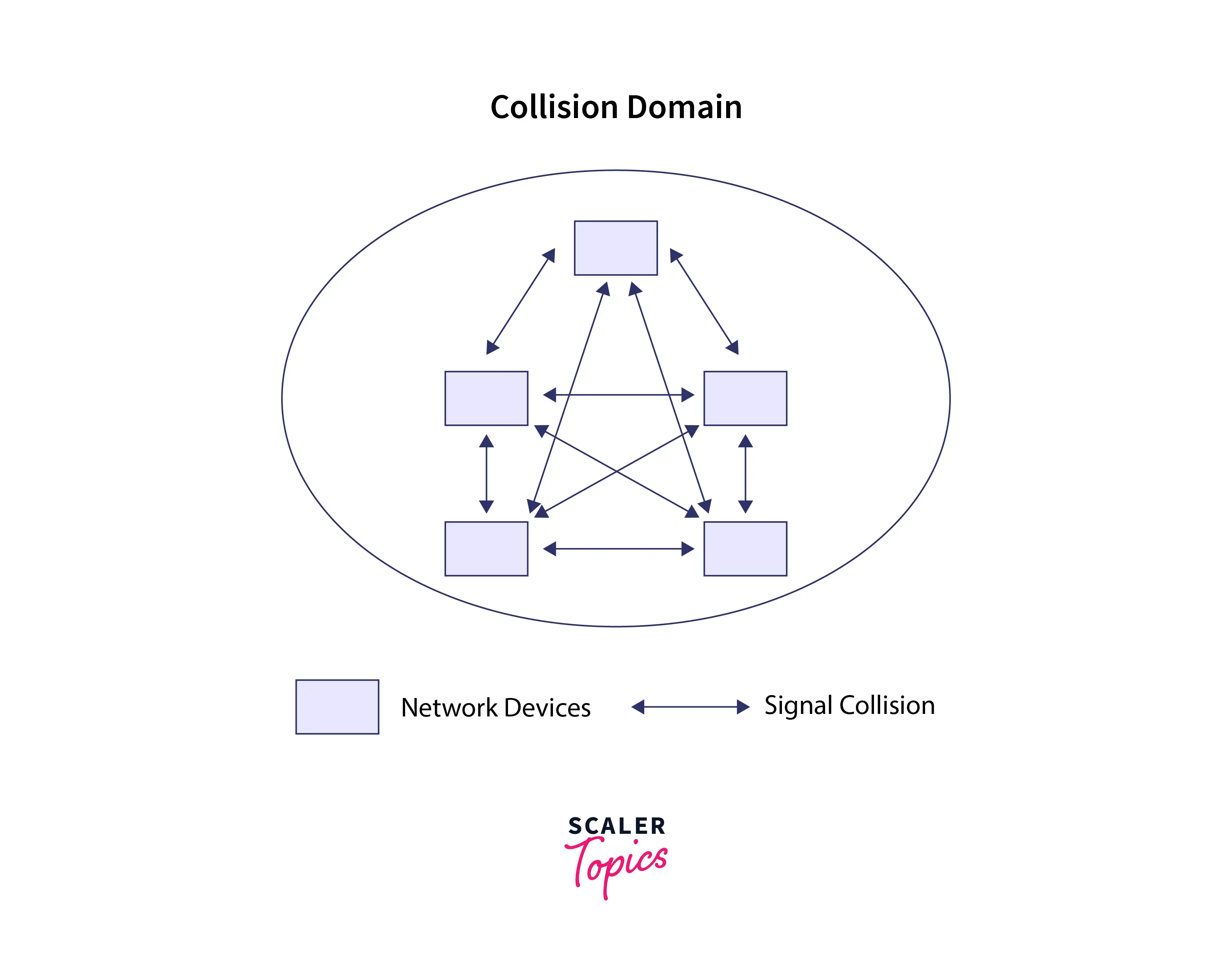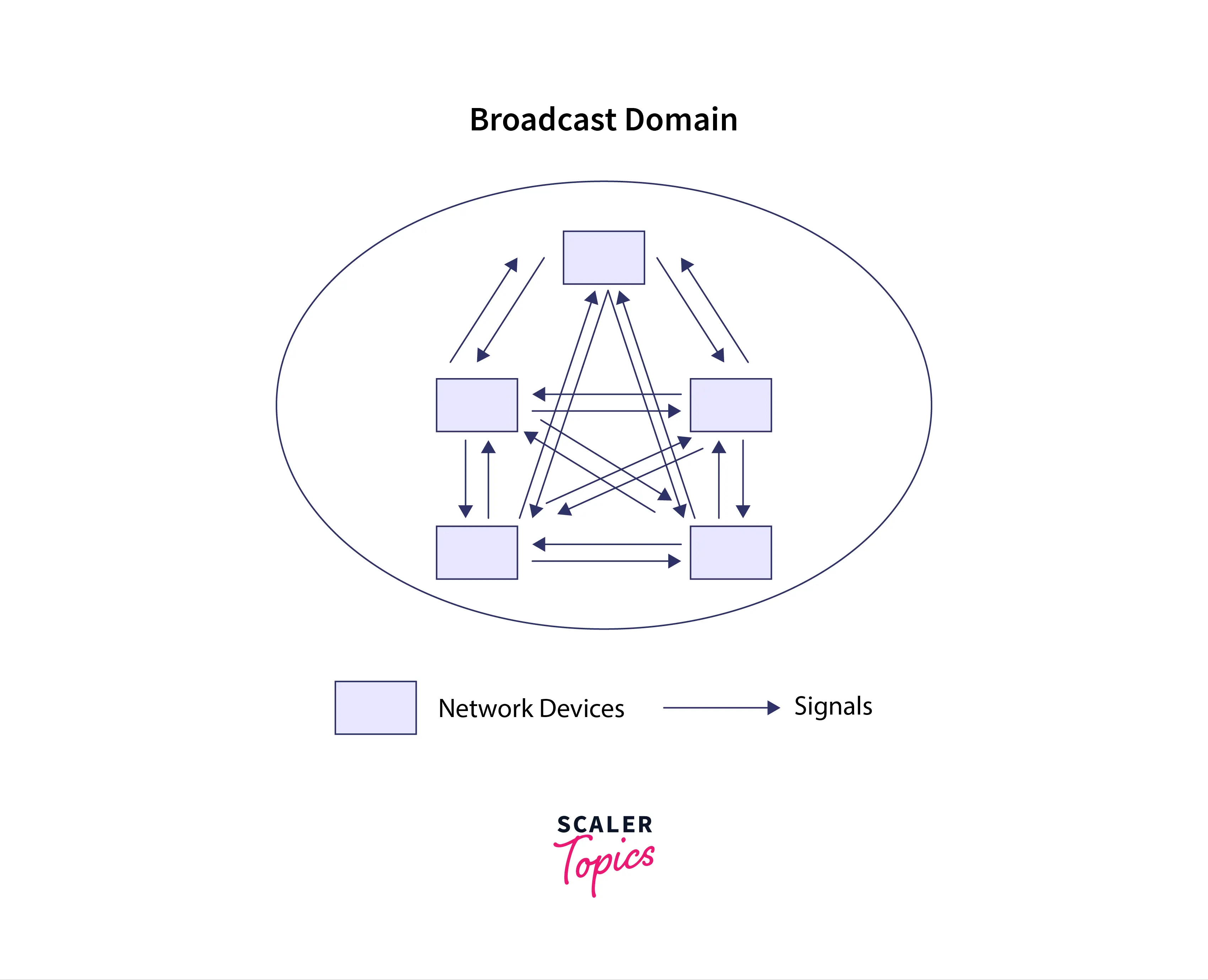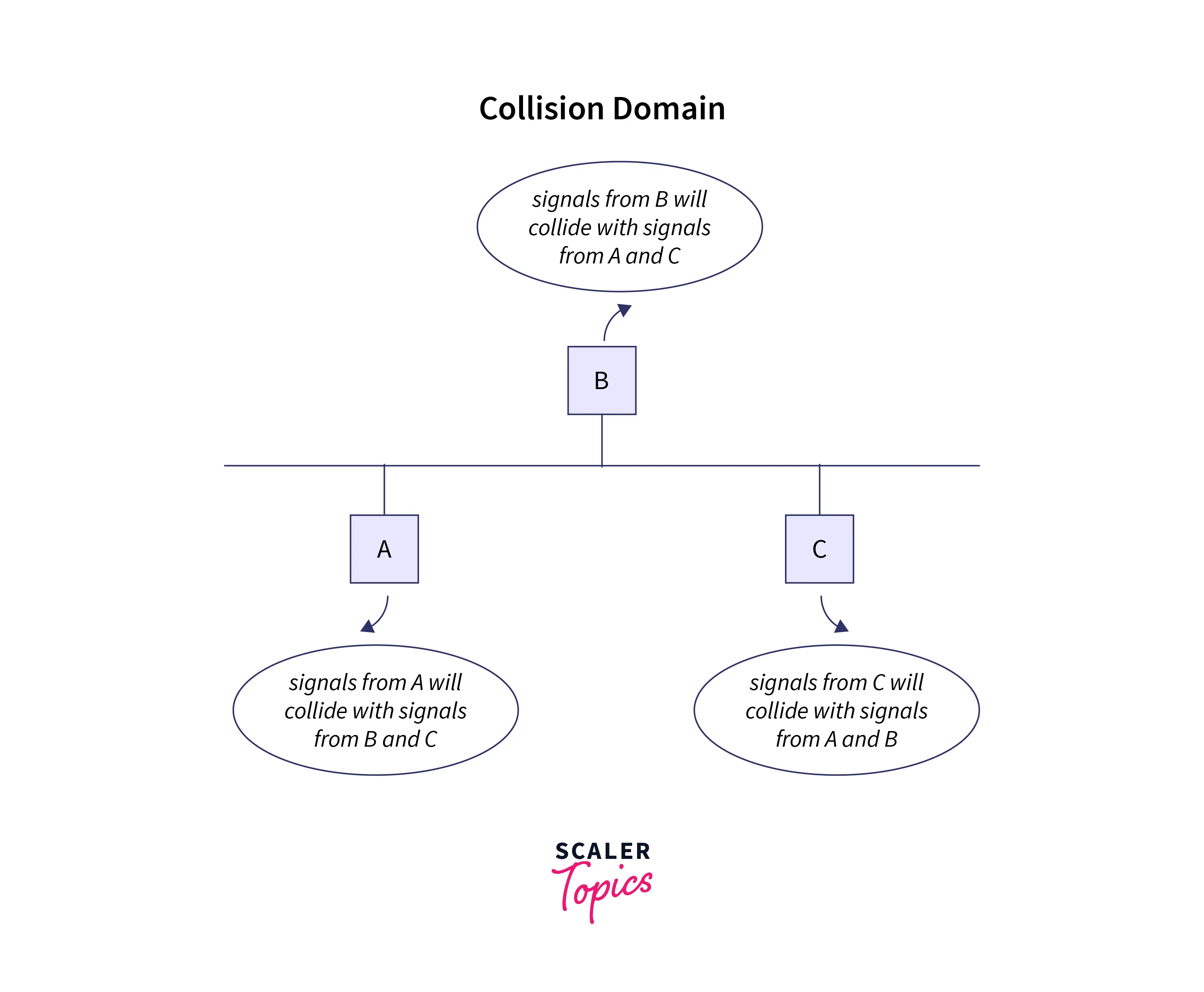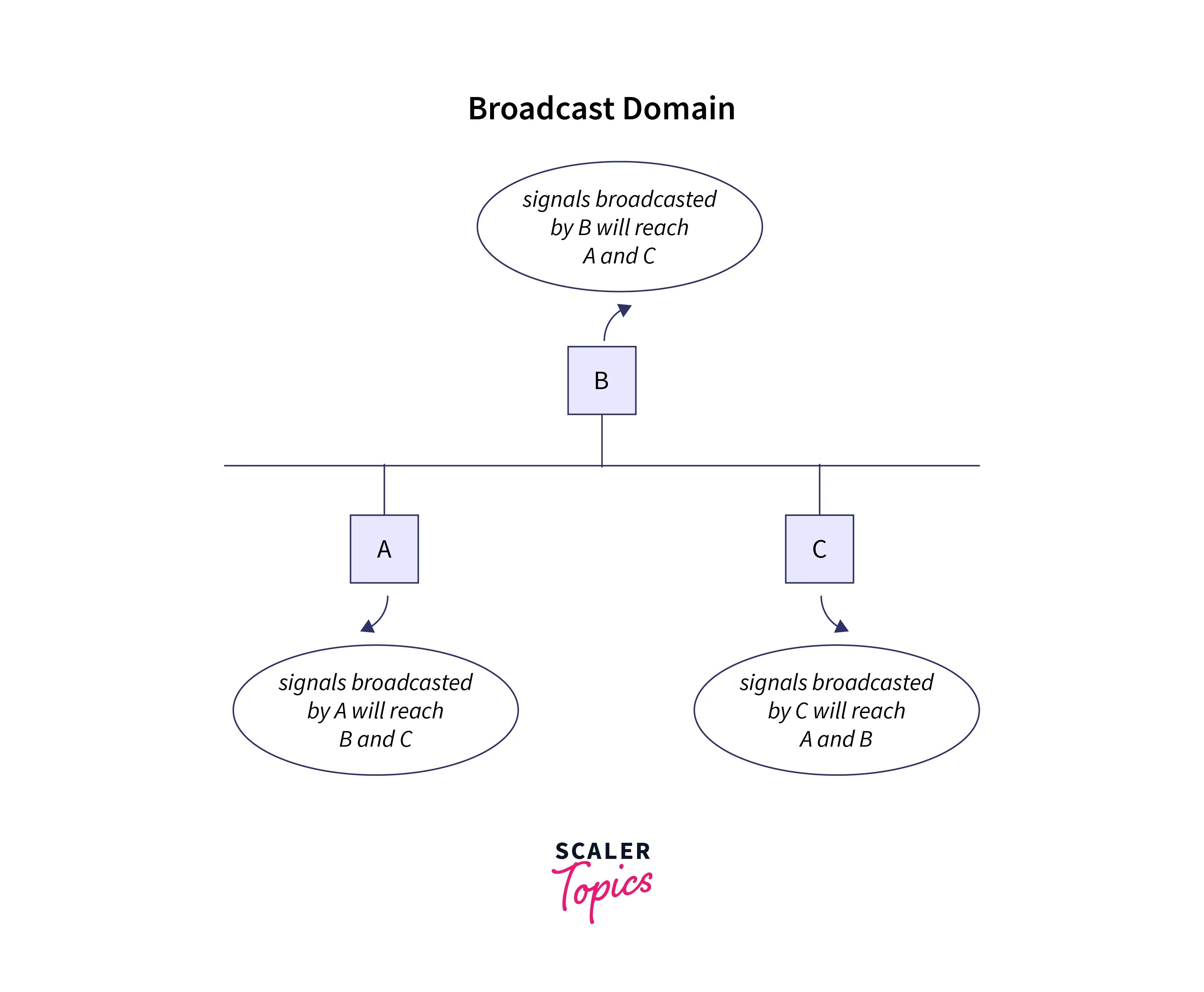Collision Domain and Broadcast Domain
Overview
To analyze the working and efficiency of the network devices, various metrics (a metric is defined as a standard or system of measurement) are used. The collision domain and the broadcast domain are two of those metrics. A collision domain is measured by finding out the number of devices whose signals collides with each other when these devices are in the same network and all the devices are transmitting signals simultaneously to each other. A broadcast domain is measured by finding out the number of devices that can receive the broadcast signal of a device in a network.
What is Domain?
A domain is a field or an area of interest over which, a particular entity has control. In computer networks, a domain is considered a network that is controlled by various network devices in a single network which are called network controllers. There are two types of domains, collision domain, and broadcast domain. These two domains are discussed below in detail.
1. Collision Domain
Consider a scenario when multiple networking devices that are there in a network are transmitting signals simultaneously to each other. These simultaneously sent signals from different devices have a very high probability of colliding with each other. A collision domain of a device (device 'D') is defined as the set of devices whose signals can collide with the signals emitted by device 'D'. When all these devices are transmitting signals simultaneously. It can be found by finding the devices whose signals collide with the signals of a particular device when all these devices are in the same network and all the devices are transmitting signals simultaneously to each other.
The below figure represents how a signal sent by any device that is present in the domain will collide with the signals sent by any other device in the domain.

2. Broadcast Domain
A broadcast domain of a device (device D) is defined as the set of devices that can receive the signal broadcasted by device 'D'. It can be found by finding the devices that can receive the signals of a particular device when this device broadcasts a signal.
The below figure represents how a signal broadcasted by any device that is present in the domain will react to any other device in the domain.

Example of Collision Domain
Consider a network of devices that follows a bus topology architecture and all the devices are connected through a common cable. Since all the nodes are connected through a common cable, if all the nodes transmit signals simultaneously, then the signal transmitted by any node will collide with the signals transmitted by all the other nodes in the network.
Hence, all the nodes will be considered in the collision domain. This means that the collision domain of any node in the network will include all the other devices (i.e. 'n-1' devices if the network consists of 'n' devices) in a network that follows bus topology. Below is the picture that represents a collision domain.

In the above image, the collision domain of node A will contain nodes B and C (2 nodes). Similarly, for node B, the collision domain contains nodes A and C, and for node C, the collision domain contains nodes A and B.
Example of Broadcast Domain
Consider a network of devices that follows a bus topology architecture and all the devices are connected through a common cable. Since all the nodes are connected through a common cable, if any of the nodes broadcast a signal, then this signal will be received by all the other nodes in the network. Hence, all the nodes will be considered in the broadcast domain. This means that the broadcast domain of any node in the network will include all the other devices (i.e. 'n-1' devices if the network consists of 'n' devices) in a network that follows bus topology. Below is the picture that represents a broadcast domain.

In the above image, the broadcast domain of node A will contain nodes B and C (2 nodes). Similarly, for node B, the broadcast domain contains nodes A and C, and for node C, the collision domain contains nodes A and B.
Difference between Collision Domain and Broadcast Domain
| Collision Domain | Broadcast Domain |
|---|---|
| A collision domain of a device (device 'D') is defined as the set of devices whose signals can collide with the signals emitted by device 'D' when all these devices are transmitting signals simultaneously. | A broadcast domain of a device (device D) is defined as the set of devices that can receive the signal broadcasted by device 'D'. |
| In the collision domain, the signals from nodes can be transmitted forward and backward at a time. This means if node B is in the collision domain of node A, the signal can be transmitted from A to B as well as from B to A. | In the broadcast domain, the signals from the node travel in all directions at a time. This means if node B is in the broadcast domain of node A, when A broadcast a signal, it will reach B and vice versa. |
| A collision domain breaks (i.e. the collision domain gets reduced) into sub-domains when a bridge/switch/router is introduced to the collision domain. While in the case of repeaters and hubs, it does not break (i.e. the collision domain does not get reduced). | A broadcast domain breaks (i.e. the broadcast domain gets reduced) into sub-domains when a router is introduced to the broadcast domain. While in the case of repeaters/hubs/bridges/switches, it does not break (i.e. the broadcast domain does not get reduced). ::: |
Collision Domain vs Broadcast Domain: Key Differences
A collision domain of a device (device 'D') is defined as the set of devices whose signals can collide with the signals emitted by device 'D' when all these devices are transmitting signals simultaneously. A broadcast domain of a device (device D) is defined as the set of devices that can receive the signal broadcasted by device 'D'.
A collision domain breaks (i.e. the collision domain gets reduced) into sub-domains when a bridge/switch/router is introduced to the collision domain. While in the case of repeaters and hubs, it does not break (i.e. the collision domain does not get reduced). A broadcast domain breaks (i.e. the broadcast domain gets reduced) into sub-domains when a router is introduced to the broadcast domain. While in the case of repeaters/hubs/bridges/switches, it does not break (i.e. the broadcast domain does not get reduced).
Conclusion
- A domain is considered a network that is controlled by various network devices that are called network controllers.
- A collision domain is defined as the domain in which, the signals that are transmitted by the devices over the network collide with each other. A broadcast domain is a domain that consists of all the devices that can receive a broadcast message that is sent by any other device that is present in the domain.
- A collision domain breaks into sub-domains when a bridge/switch/router is introduced to the collision domain. While in the case of repeaters and hubs, it does not break. A broadcast domain breaks into sub-domains when a router is introduced to the broadcast domain. While in the case of repeaters/hubs/bridges/switches, it does not break.
